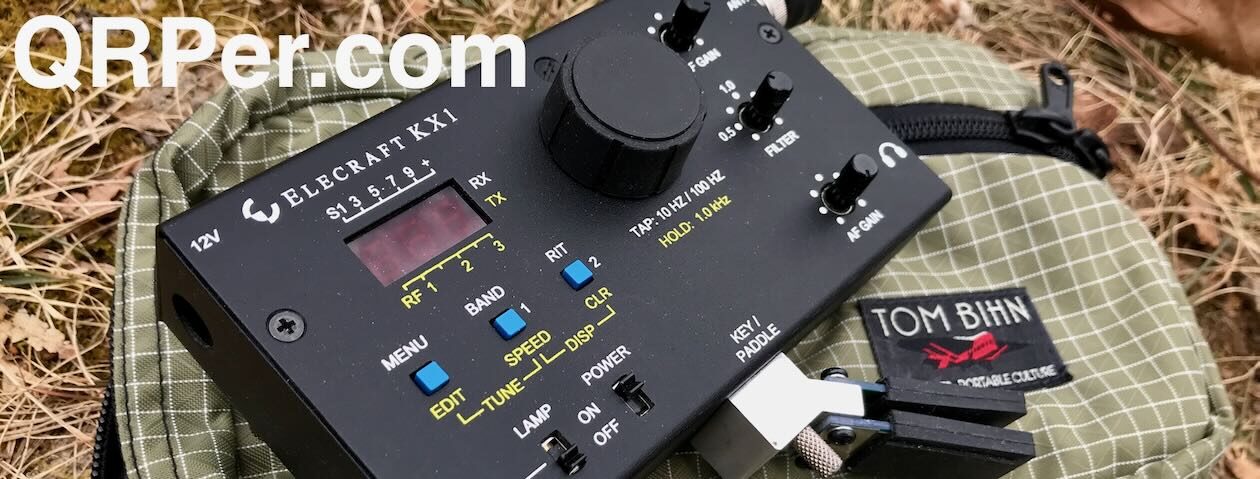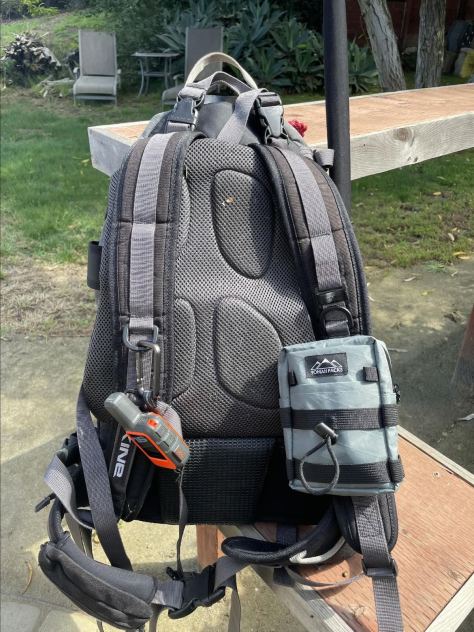Many thanks to Andrea (IW0HK) who shares the following field report:
Cold War POTA in Berlin
by Andrea (IW0HK)
In the last week of October, I found myself in Berlin for a work commitment.
Taking advantage of two half-days off, I wanted to combine two of my great passions: radio and the history of the Cold War. I chose to visit two historical sites that also serve as a reference point for the POTA (Parks on the Air) ham radio program, allowing me to transmit with my radio in these unique locations.
 The first location is a park located about a kilometer away from where I worked for a week, the headquarters of RBB, the public radio and television of Berlin and Brandenburg. This park is Teufelsberg, which literally means the Devil’s Mountain. It is an artificial hill in Berlin, created using the rubble from World War II, located within the Grunewald forest (POTA reference DA-0218).
The first location is a park located about a kilometer away from where I worked for a week, the headquarters of RBB, the public radio and television of Berlin and Brandenburg. This park is Teufelsberg, which literally means the Devil’s Mountain. It is an artificial hill in Berlin, created using the rubble from World War II, located within the Grunewald forest (POTA reference DA-0218).
On this hill, the Teufelsberg listening station of the American NSA in Berlin was situated, which was used to intercept radio signals from East Germany during the Cold War.
Today, you can still see the remains of the antenna covers of the listening base. I activated the Pota park that has been established around the abandoned base, and I was delighted to transmit my signals in Morse code (CW) in QRP mode in this historically significant place.

I used the small QMX transceiver from QRP Labs, a gem for operating in FT8/CW modes on the 80/60/40/30/20 meter bands.
For an antenna, I used a 20-meter wire connected to an EFHW 49:1 balun, hung above a tree. Amid families flying kites, I made 15 CW QSOs, which allowed me to validate the park activation. The program requires a minimum of 10 QSOs for activation to be valid.
 The second activation took place in another symbol of the Cold War: the runway of the former Tempelhof airport. I activated this as a POTA site and transmitted CW QRP with the small QMX transceiver from QRP Labs in the fog and cold.
The second activation took place in another symbol of the Cold War: the runway of the former Tempelhof airport. I activated this as a POTA site and transmitted CW QRP with the small QMX transceiver from QRP Labs in the fog and cold.
 The Berlin-Tempelhof Airport was an airport located in the southern part of the central Tempelhof-Schöneberg district and was operational from 1923 to 2008.
The Berlin-Tempelhof Airport was an airport located in the southern part of the central Tempelhof-Schöneberg district and was operational from 1923 to 2008.
It is famous for hosting the Berlin Airlift base (1948-1949), which was an incredible operation undertaken during the Cold War by the United States and their Western European allies to transport food and other essential supplies to West Berlin, surrounded by the Soviets.
 Today, the airport is closed, and its runway has become a massive park (POTA reference DA-0169) used by Berliners for various outdoor activities. I activated it early in the morning on a gray and cold day, setting up my EFHW antenna practically on the runway.
Today, the airport is closed, and its runway has become a massive park (POTA reference DA-0169) used by Berliners for various outdoor activities. I activated it early in the morning on a gray and cold day, setting up my EFHW antenna practically on the runway.
Again, I used only CW, and in no time, I reached the number of 11 QSOs. The cold made me stop the activity earlier than planned, but the activation is still valid. After concluding the transmissions, I walked through the enormous park, imagining its past use and appreciating how often my amateur radio passion leads me to incredible places.
This was the first test of this “minimal” POTA kit with the QMX transceiver, the 20-meter EfHw antenna, and the XTPower XT-16000QC3 12v power bank.
I must say that the test was successful. This is an excellent little radio that I want to use and take with me on every work trip. The POTA program continually takes me to incredible places, both in terms of nature and history, as it did in this case in Berlin





















































